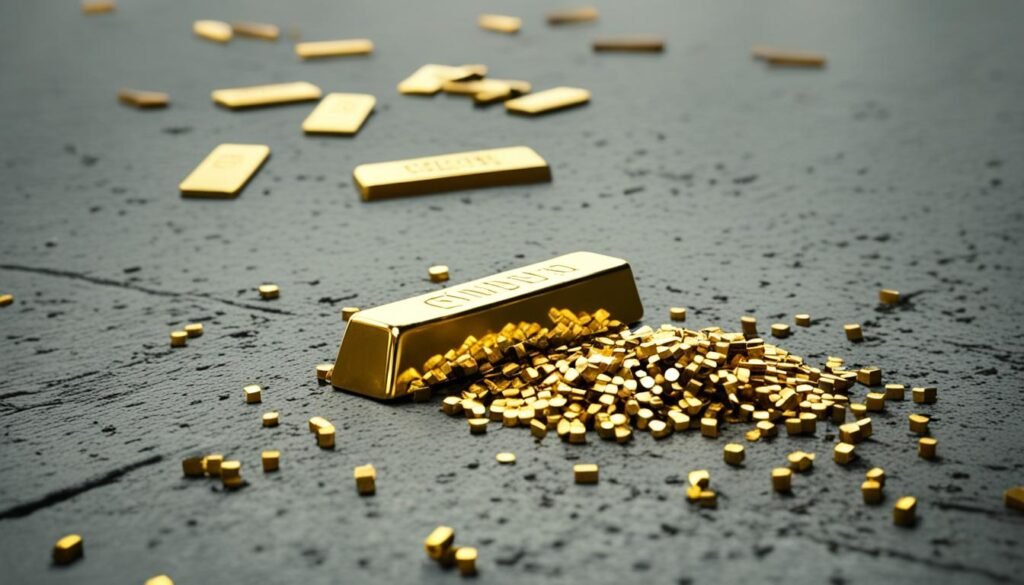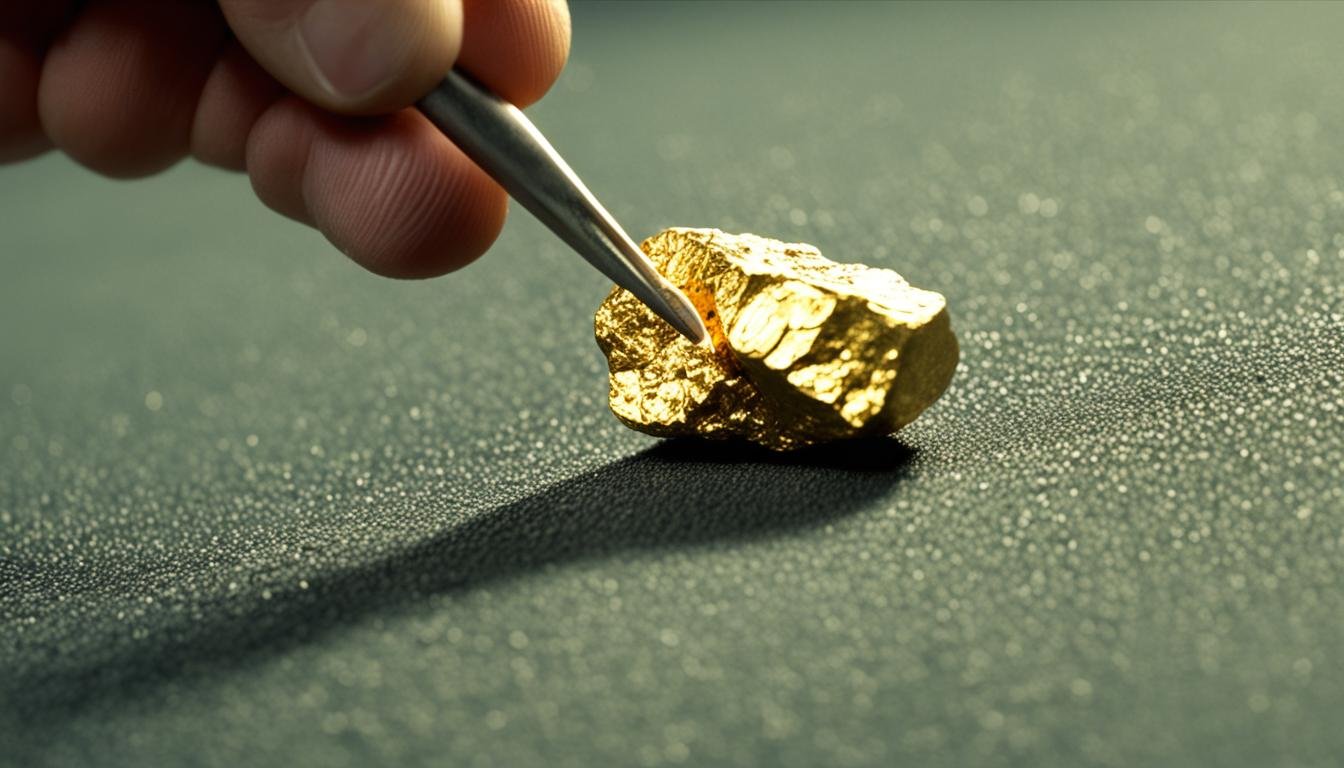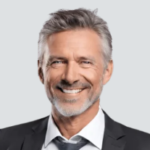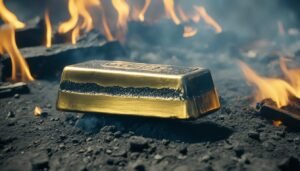Gold has always been associated with allure, opulence, and timeless beauty. But have you ever wondered if gold sticks to magnets?
It’s a question that challenges common beliefs and raises curiosity among jewelry enthusiasts and collectors. The truth about gold’s interaction with magnets is about to be unveiled.
Key Takeaways about Does Gold Stick to Magnets
- Gold is not magnetic, contrary to popular belief.
- Testing gold with magnets is a practical way to determine its authenticity.
- Understanding the behavior of gold near magnets can help differentiate between pure gold and gold alloys.
- There are alternative methods to authenticate gold, beyond magnet tests.
- Lab testing is the gold standard for accurate metal verification.
For years, there has been a common misconception that gold is magnetic. Many people believe that if gold jewelry is attracted to magnets, it is a true sign of its authenticity. But is this notion based on fact or fiction?
In this article, we will delve deep into the fascinating world of gold magnetism. We will unravel the magnetic properties of gold, explore its behavior near magnets, and even provide practical tests that you can perform at home to determine if your gold jewelry is the real deal.
So, get ready to uncover the truth about gold and magnets. Are you ready to challenge what you thought you knew? Let’s dive in!
Unraveling the Magnetic Properties of Gold
Magnetism is a fascinating natural phenomenon that has intrigued scientists for centuries. It arises from the interactions between moving electric charges. While many metals exhibit magnetic properties, gold, the coveted precious metal, is not one of them.
Understanding Magnetism in Precious Metals
When it comes to magnetism, precious metals like gold behave differently compared to other metals. Gold is classified as a non-magnetic material, meaning it does not exhibit any attraction or repulsion to magnets. This unique property sets gold apart from magnetic metals such as iron or nickel. So, if you were to place a gold object near a magnet, it would not be attracted to it, nor would it cause any noticeable effect on the magnet.
The Surprising Behavior of Gold Near Magnets
Although gold is not magnetic, it does interact with magnetic fields in interesting ways. When a magnetic field is applied to gold, it induces electrical currents within the metal. These currents, known as eddy currents, create a counter-magnetic field that opposes the external magnetic field. As a result, gold experiences a slight repulsive force when near magnets.
This image visually represents the behavior of gold near magnets.
Is Your Gold Jewelry Really Pure?
When it comes to gold jewelry, one of the most important questions you may have is whether it is truly pure. With so many counterfeit and low-quality pieces on the market, authenticating your gold jewelry is crucial. Testing the purity of your gold not only ensures its value but also guarantees your investment.
So, how can you determine if your gold jewelry is really pure? There are several methods available to you. Let’s explore a few of them:
- Acid Testing: Acid testing is a common method used to authenticate gold jewelry. This process involves applying a small amount of acid to the jewelry and observing the reaction. The acid’s effect on the gold helps determine its purity level.
- X-Ray Fluorescence (XRF) Testing: XRF testing is a non-destructive technique that uses x-rays to analyze the composition of gold jewelry. This method provides accurate results by measuring the gold’s elemental components.
- Electronic Gold Testing: Electronic gold testers use conductivity to assess the purity of gold. By passing an electric current through the jewelry, these testers can determine the gold’s purity level based on its conductivity.
By utilizing these testing methods, you can gain confidence in the authenticity and quality of your gold jewelry. Remember, testing the purity of your gold is an important step in verifying its value and ensuring you are making a wise investment. Don’t let counterfeit or impure gold jewelry deceive you – take the necessary steps to authenticate your precious pieces and enjoy them for years to come.
Practical Testing: Gold’s Reaction to Magnetism
Testing the magnetism of gold is a practical way to determine its authenticity. By following a simple process using magnets, you can gain valuable insights into the composition of your gold jewelry. Understanding how to test gold with magnets and interpreting the results will help you make informed decisions about your precious metal investments.
Simple Steps to Test Gold with Magnets at Home
1. Gather your materials: a strong magnet and the gold jewelry you wish to test.
2. Hold the magnet close to the gold jewelry and observe if any attraction occurs.
3. Slowly move the magnet along the surface of the gold, paying attention to any changes in behavior.
4. If the gold is genuinely pure, it will not be attracted to the magnet and will not exhibit any magnetic properties.
5. If the gold jewelry shows any signs of magnetic attraction or behavior (such as sticking to the magnet or being pulled towards it), it is likely that the piece is not made of pure gold, as pure gold is not magnetic.
6. Repeat the test on different areas of the jewelry to ensure accurate results.
Interpreting the Results of Your Magnet Test
The results of your magnet test will provide valuable information about the authenticity of your gold jewelry:
- If the gold shows no signs of magnetic attraction, this indicates that it is likely pure gold, as pure gold is not magnetic.
- If the gold exhibits any magnetic behavior, such as sticking to the magnet or being pulled towards it, it suggests that the jewelry may be made of a metal or alloy with magnetic properties, rather than pure gold.
- It’s important to note that the magnet test alone is not definitive proof of gold purity. It is just one method that can provide initial insights into the composition of your gold jewelry.
- If you are unsure about the results of your magnet test or require a more rigorous analysis, consider consulting with a professional jeweler or using additional testing methods, such as acid tests or density measurements.
By conducting a magnet test and interpreting the results, you can gain a better understanding of the authenticity and purity of your gold jewelry. Remember, magnet tests are a helpful first step, but they should not be the sole basis for determining gold purity.
Debunking the Myths of Gold and Magnets
When it comes to gold and magnets, there are many myths and misconceptions that have been circulating for years. It’s time to separate fact from fiction and debunk some of the most common misunderstandings about gold’s magnetism.
The Science Behind Gold and Magnets
Gold’s non-magnetic nature can be explained by its atomic structure. Gold is an element with atomic number 79, and its atoms have a unique arrangement of electrons. Unlike ferromagnetic materials such as iron or nickel, gold does not have unpaired electrons that align to create a magnetic field.
Furthermore, the electron configuration of gold stabilizes its diamagnetic properties, meaning it is repelled by and creates a weak magnetic field in opposition to an external magnetic field. This characteristic further reinforces gold’s resistance to magnetism.
Common Misconceptions About Gold’s Magnetism
- Gold is attracted to magnets: This is one of the most widespread misconceptions. In reality, pure gold does not stick to magnets and is not attracted to them in any way. However, it is important to note that gold alloys, which are mixtures of gold and other metals, may exhibit some magnetic properties depending on the composition of the alloy.
- Magnet tests are foolproof for gold authenticity: While magnet tests can be a useful initial screening method, they are not definitive proof of gold authenticity. Gold-plated or gold-filled jewelry, which have a thin layer of gold over a base metal, may still exhibit magnetic properties due to the underlying metal. Therefore, it is essential to utilize other methods for a comprehensive assessment of gold authenticity.
- Strong magnets are needed for accurate tests: Contrary to popular belief, you don’t need a powerful magnet for testing gold. Even a simple refrigerator magnet can provide insights into the magnetism of gold jewelry. The key lies in observing the absence of any magnetic attraction between the gold and the magnet.
By debunking these myths and clarifying misconceptions, we can gain a clearer understanding of gold’s magnetism and make informed decisions when it comes to testing gold for authenticity.

Silver Versus Gold: Conducting Magnet Tests
Testing the magnetism of silver and gold can provide valuable insights into the authenticity and purity of these precious metals. While gold is commonly known for its non-magnetic properties, silver magnetism can vary depending on its composition. Conducting magnet tests on silver jewelry can help determine its quality and distinguish it from counterfeit or less valuable metals.
How To Test Silver With Magnets
Testing silver with magnets is a straightforward process that you can do at home. Follow these steps to conduct a simple magnet test on your silver jewelry:
- Begin by obtaining a small magnet.
- Hold the magnet close to the silver jewelry and observe its behavior.
- If the silver jewelry is attracted to the magnet or exhibits strong magnetic properties, it may contain other metals or alloys.
- On the other hand, if the silver jewelry shows no attraction or minimal magnetic properties, it is likely to be pure silver.
It is important to note that the magnet test alone is not definitive proof of silver purity. It is always recommended to consult with a professional jeweler or use additional testing methods for accurate results.
Comparing Results: Silver’s Magnetic Traits
When comparing silver and gold magnet tests, there are noticeable differences in their magnetic behavior:
Gold:
- Gold does not exhibit any attraction to magnets.
- The absence of magnetic properties is a distinguishing characteristic of pure gold.
- If gold shows magnetic behavior, it likely contains other metals or alloys.
Silver:
- Silver may exhibit weak magnetic properties, especially if it contains alloys or impurities.
- The strength of silver magnetism can vary depending on the specific composition.
- Pure silver generally shows minimal to no attraction to magnets.
Comparing the results of magnet tests on silver and gold can help differentiate these two metals and provide insight into their purity and authenticity.

Factors Affecting Magnetism in Gold Alloys
In the previous sections, we have explored the magnetic properties of pure gold and how it interacts with magnets. However, when it comes to gold jewelry, it is essential to consider the role of mixed metals and understand the concept of gold alloys.
Role of Mixed Metals in Gold Jewelry
Gold jewelry is rarely made from pure gold. Instead, it is commonly crafted using gold alloys, which are combinations of gold with other metals. These mixed metals are added to gold to enhance its durability, strength, and color variation. Some commonly used metals in gold alloys include silver, copper, nickel, and zinc.

When Gold is Not Just Gold: Understanding Alloys
The presence of mixed metals in gold alloys can significantly impact their magnetic properties. While pure gold is non-magnetic, the addition of other metals can introduce magnetism to the alloy. The specific magnetic behavior of gold alloys depends on the composition and proportion of the mixed metals.
For example, some gold alloys may exhibit slight attraction to magnets due to the magnetic properties of the added metals. On the other hand, certain alloys may be completely non-magnetic if the added metals themselves are non-magnetic.
Understanding the characteristics and behavior of gold alloys with different metal compositions is crucial when assessing the magnetism of gold jewelry. It allows us to differentiate between pure gold and gold alloys, providing valuable insights into the authenticity and quality of gold jewelry.
Now that we have learned about the factors affecting magnetism in gold alloys, let’s explore other methods for authenticating gold and silver jewelry in the next section.
Other Methods for Authenticating Gold and Silver
While magnet tests are a popular and accessible method for determining the authenticity of gold and silver, there are alternative tests that can provide further validation. These additional tests can offer a comprehensive assessment of the metal’s purity and ensure you are making an informed investment. Let’s explore some of these alternative methods in more detail.
Acid Tests
An acid test is a widely used technique to verify the authenticity of gold. It involves applying acid of varying strengths to the metal and observing the reaction. Genuine gold will not react or be affected by the acid, while impure or counterfeit gold may show signs of discoloration or damage.
By carefully conducting an acid test, you can determine the purity of the gold based on the acid’s reaction. This method is often employed by professionals and jewelers to verify the quality of gold and ensure its authenticity.
Density Measurements
Density measurements are another effective way to authenticate gold and silver. This non-destructive test relies on the principle that different metals have different densities. By accurately measuring the density of a metal object, you can determine if it aligns with the expected density of gold or silver.
To conduct a density measurement, specialized equipment is required. Professionals and independent laboratories often utilize this method to determine the authenticity of precious metals.
Making use of these alternative methods in addition to magnet tests can provide a more comprehensive assessment of the authenticity and purity of gold and silver. Each method has its advantages, limitations, and specific applications. It is recommended to consult with professionals or rely on reputable testing services to ensure accurate results.

When Magnets Fail: Limitations of Magnetic Testing
While magnet tests can be a useful initial step in determining the authenticity of gold and other metals, it’s important to understand their limitations. Magnet tests alone are not foolproof and may not provide conclusive evidence of a metal’s purity. Factors such as the presence of other magnetic materials in the vicinity or even weak magnetism in certain alloys can affect the results.
Laboratory testing is considered the gold standard when it comes to metal authentication. Specialized equipment and trained professionals can provide accurate and reliable results, ensuring the purity and quality of the metal being tested. Laboratory testing methods involve advanced techniques that go beyond simple magnetism, allowing for a comprehensive analysis of the metal’s composition.
Laboratory Testing as the Gold Standard
Laboratory testing offers several advantages over magnet tests. It allows for a more detailed and precise examination of the metal, taking into account factors such as alloy composition, impurities, and even the presence of trace elements. Techniques such as X-ray fluorescence (XRF) and inductively coupled plasma-mass spectrometry (ICP-MS) are commonly employed to determine the exact composition and purity of metals.
These laboratory techniques provide highly accurate results and can detect even the smallest deviations from expected compositions. This level of precision is crucial, especially when dealing with valuable metals like gold and silver. It ensures that investors, collectors, and manufacturers can confidently authenticate and verify the quality of their metals.
Advanced Techniques in Metal Verification
Besides laboratory testing, there are other advanced techniques available for metal verification. These include scanning electron microscopy (SEM) and energy-dispersive X-ray spectroscopy (EDX). These techniques allow for detailed analysis of the metal’s microstructure, surface characteristics, and elemental distribution.
SEM and EDX provide valuable insights into the authenticity, origin, and quality of metals. They can help identify any anomalies, irregularities, or potential counterfeit materials in a sample. These advanced techniques play a vital role in forensic investigations, historical artifact authentication, and the jewelry industry, where accurate metal verification is essential.
Metal Authentication Techniques
| Method | Advantages | Limitations |
|---|---|---|
| Laboratory Testing | Highly accurate results Comprehensive analysis of metal composition | Requires specialized equipment and expertise Relatively longer turnaround time |
| X-ray Fluorescence (XRF) | Non-destructive analysis Quick and efficient | Expensive equipment May require sample preparation |
| Inductively Coupled Plasma-Mass Spectrometry (ICP-MS) | Precise measurement of elemental composition Wide range of detectable elements | Expensive equipment and maintenance Requires experienced operator |
| Scanning Electron Microscopy (SEM) | Detailed analysis of surface characteristics Identification of microstructural features | Expensive equipment Requires sample preparation |
| Energy-Dispersive X-ray Spectroscopy (EDX) | Elemental analysis and mapping Non-destructive examination | Expensive equipment Requires experienced operator |
In conclusion, while magnet tests provide a quick and accessible method for preliminary metal authentication, they have limitations. To ensure accurate verification of metal authenticity, laboratory testing is the gold standard.
Advanced techniques such as XRF, ICP-MS, SEM, and EDX offer comprehensive analyses, providing in-depth insights into the composition and quality of metals. By harnessing these advanced metal verification techniques, individuals and industries can trust in the authenticity and value of their precious metals.
Conclusion
Throughout this article, we have delved into the fascinating world of gold and magnetism. We started by addressing the common misconception that gold is magnetic, debunking the myth and revealing the truth about its non-magnetic nature. Understanding the behavior of gold near magnets can be a surprising revelation, as it showcases the unique properties of this precious metal.
In our quest for authenticating gold jewelry, we explored practical testing methods, specifically the magnet test. By providing simple steps to test gold with magnets at home, we empowered you to take the first step in metal authentication. Interpreting the results of your magnet test is crucial in determining the purity of your gold, allowing you to make informed decisions about your investments.
While magnet tests serve as an effective initial screening method, it is important to note their limitations. To ensure the ultimate accuracy in metal verification, laboratory testing remains the gold standard. Advanced techniques and technologies are at the forefront of metal authentication, providing comprehensive assessments of the purity of your precious metals.
In conclusion, the purity of your gold investment is of utmost importance. By utilizing magnet tests as a first step in metal authentication, you can gain valuable insights into the authenticity of your gold jewelry. Remember, while magnet tests provide useful indications, consulting experts and employing a range of verification methods are essential to make informed decisions about your precious metals.
FAQ about Does Gold Stick to Magnets
Does gold stick to magnets?
No, gold does not stick to magnets. Gold is not a magnetic metal, so it is not attracted to magnets.
What are the magnetic properties of gold?
Gold is a non-magnetic metal, meaning it does not possess magnetic properties and is not attracted to magnets.
How can I test the purity of my gold jewelry?
There are various methods to test the purity of gold jewelry, including magnet tests, acid tests, and density measurements.
How do I test gold with magnets at home?
To test gold with magnets at home, you can simply hold a magnet close to the gold jewelry and observe whether it is attracted or repelled. However, it’s essential to note that this test is not a definitive indicator of purity.
How do I interpret the results of a magnet test on gold?
If the gold is not attracted to the magnet or is only minimally affected, it suggests that the jewelry may be pure. However, if the gold is attracted to the magnet, it indicates the presence of other magnetic metals or a lower gold purity level.
Are there any misconceptions about gold’s magnetism?
Yes, there are common misconceptions that gold is magnetic. In reality, gold is a non-magnetic metal and does not exhibit magnetic properties.
How does silver behave when exposed to magnets?
Unlike gold, silver is a magnetic metal. When exposed to magnets, silver will be attracted to them.
What role do mixed metals play in gold jewelry?
Gold jewelry often contains mixed metals like copper or silver. These metals can affect the overall magnetism of the jewelry, causing it to exhibit some level of magnetism.
What are some alternative methods to authenticate gold and silver?
Aside from magnet tests, other methods to authenticate gold and silver include acid tests, density measurements, and laboratory testing.
What are the limitations of using magnet tests for metal authentication?
Magnet tests are a simple and preliminary method for metal authentication but have limitations. They cannot provide an accurate measurement of gold purity and may produce false results due to the presence of mixed metals.
Why is laboratory testing essential for accurate metal verification?
Laboratory testing is considered the gold standard for metal verification as it provides precise results regarding the purity and composition of metals.
How can I ensure the purity of my gold investment?
Ensuring the purity of your gold investment involves conducting comprehensive tests like magnet tests, acid tests, and density measurements. Consulting with reputable jewelers and laboratories is also recommended.








